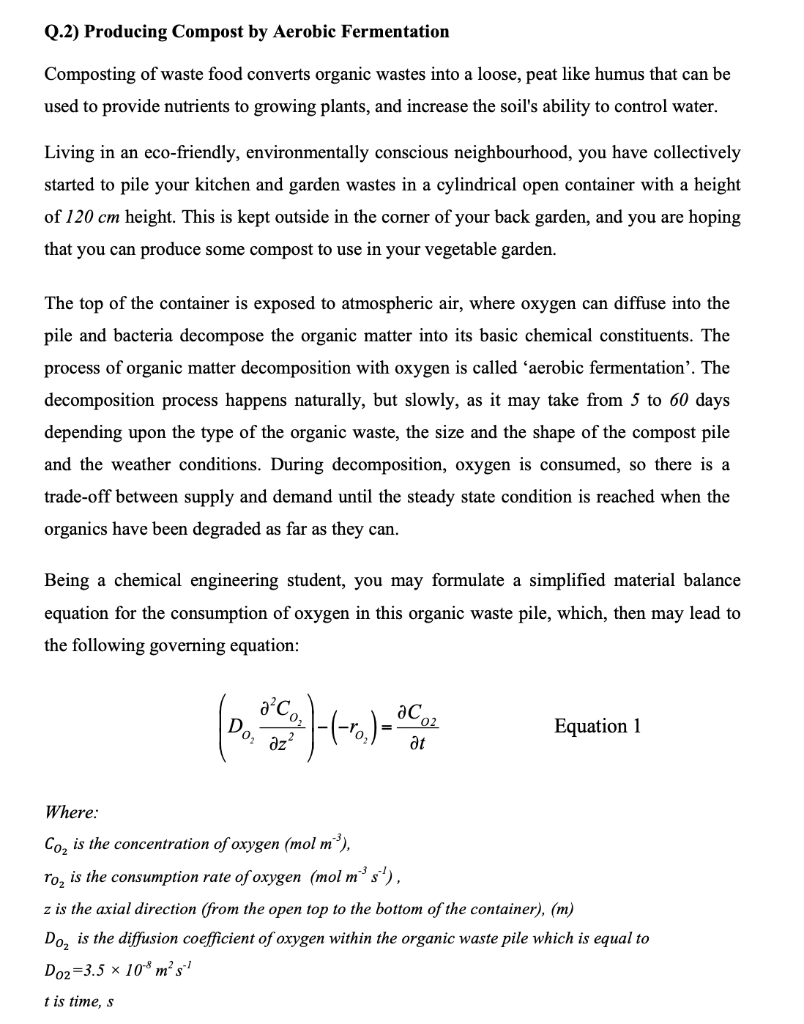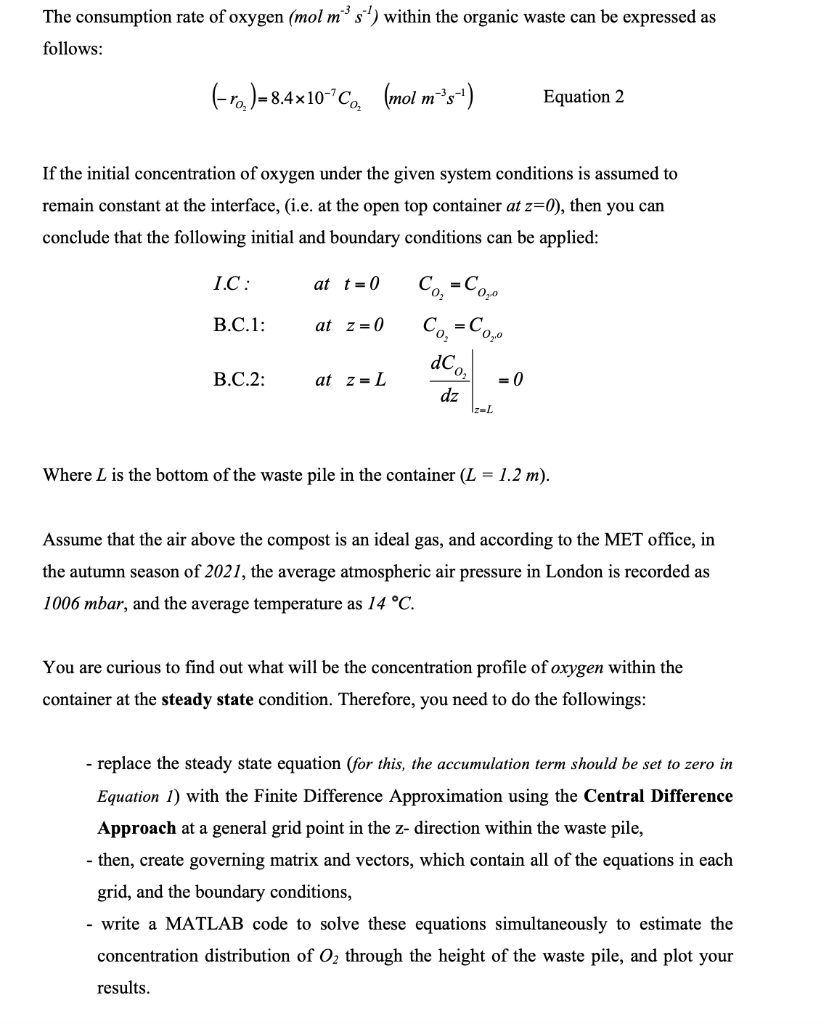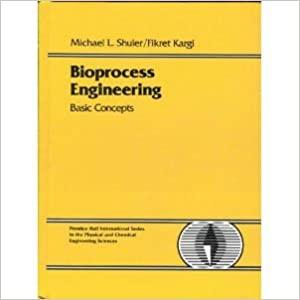


Q.2) Producing Compost by Aerobic Fermentation Composting of waste food converts organic wastes into a loose, peat like humus that can be used to provide nutrients to growing plants, and increase the soil's ability to control water. Living in an eco-friendly, environmentally conscious neighbourhood, you have collectively started to pile your kitchen and garden wastes in a cylindrical open container with a height of 120 cm height. This is kept outside in the corner of your back garden, and you are hoping that you can produce some compost to use in your vegetable garden. The top of the container is exposed to atmospheric air, where oxygen can diffuse into the pile and bacteria decompose the organic matter into its basic chemical constituents. The process of organic matter decomposition with oxygen is called 'aerobic fermentation'. The decomposition process happens naturally, but slowly, as it may take from 5 to 60 days depending upon the type of the organic waste, the size and the shape of the compost pile and the weather conditions. During decomposition, oxygen is consumed, so there is a trade-off between supply and demand until the steady state condition is reached when the organics have been degraded as far as they can. Being a chemical engineering student, you may formulate a simplified material balance equation for the consumption of oxygen in this organic waste pile, which, then may lead to the following governing equation: D. oCo, -(-)= ) ac 02 at Equation 1 dz? Where: Co, is the concentration of oxygen (mol m), ro, is the consumption rate of oxygen (mol m's'), z is the axial direction (from the open top to the bottom of the container), (m) Do, is the diffusion coefficient of oxygen within the organic waste pile which is equal to Do2=3.5 x 10m's t is time, s The consumption rate of oxygen (mol m's') within the organic waste can be expressed as follows: (-ro)= 8.4x10^?Co, (mol ms+) Equation 2 If the initial concentration of oxygen under the given system conditions is assumed to remain constant at the interface, (i.e. at the open top container at z=0), then you can conclude that the following initial and boundary conditions can be applied: I.C: at t=0 -CO, B.C.1: at z = 0 Core Co, =C Co, = dc. 02 = 0 dz z1 B.C.2: at z=L Where L is the bottom of the waste pile in the container (L = 1.2 m). Assume that the air above the compost is an ideal gas, and according to the MET office, in the autumn season of 2021, the average atmospheric air pressure in London is recorded as 1006 mbar, and the average temperature as 14 C. You are curious to find out what will be the concentration profile of oxygen within the container at the steady state condition. Therefore, you need to do the followings: - replace the steady state equation (for this, the accumulation term should be set to zero in Equation 1) with the Finite Difference Approximation using the Central Difference Approach at a general grid point in the z- direction within the waste pile, - then, create governing matrix and vectors, which contain all of the equations in each grid, and the boundary conditions, - write a MATLAB code to solve these equations simultaneously to estimate the concentration distribution of O2 through the height of the waste pile, and plot your results. Answering this question, you should provide clear explanations on the followings: the numerical solution method that you have used, how you set up your MATLAB file , (including clear annotations in your MATLAB code, as well as adding some commentary for the explanations of setting your code) interpretation of your plot









